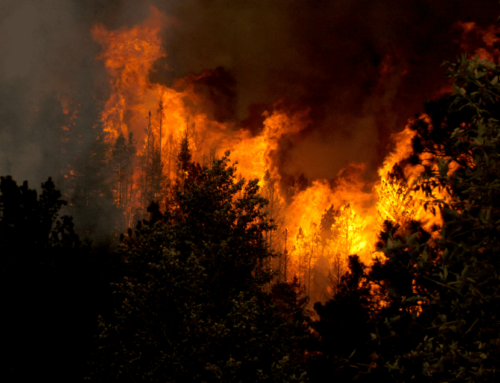A new report by a national advocacy organization says Colorado has lost out on more than a half billion dollars in revenue during the past decade that could have gone to state and local projects, all because the federal mineral royalty rate is too low.
The report by Taxpayers for Common Sense says data show the federal government collected $1.6 billion from mineral production on federal lands in Colorado from 2009 to 2018. However, if the 12.5% federal onshore mineral royalty matched the 18.75% rate for drilling offshore, the government would have collected $1.3 billion more during that period, according to the report.
And the state of Colorado, which gets 49% of the revenue from the public lands in its borders, would have reaped roughly $600 million more for state and local grants and projects, the report said. The organization has released similar reports on other Western energy-producing states.
Taxpayers for Common Sense wants to see the royalty rate for drilling on public lands brought in line with those for drilling offshore and on private and state lands, which are typically higher, said Ryan Alexander, the organization’s president. The 12.5% level is below fair market value, she said.
“Federal taxpayers should be compensated for the resources we own,” Alexander said, “and we shouldn’t be giving them away at bargain basement prices.”
Production of minerals on public lands managed by the Bureau of Land Management in Colorado generated a total of about $233.3 million in royalties and other fees in 2018, the Department of Interior Natural Resources Revenue Data reported. The state’s share was $108 million.
The royalty rate for drilling on federally managed public lands has been 12.5% since 1920, when the federal Mineral Leasing Act was approved. Through the years, members of Congress have proposed raising the rate. In June, Rep. Mike Levin, a California Democrat, introduced a bill that would raise the royalty rate to at least 18.5%.
In 2015, the Obama administration proposed raising the royalty rate and other fees, but the effort didn’t go anywhere.
The Taxpayers for Common Sense report points out that oil land gas royalty rates on private and state lands are generally higher. Colorado has a 20% royalty rate on trust lands, which are managed to raise money for public schools. About $1.7 billion has been raised for schools since 2008 from mineral and other leases on trust lands, according to the State Land Board.
Routt County Commissioner Tim Corrigan said the federal mineral revenue distributed by the state Department of Local Affairs goes to communities that have been affected by energy development and others across the state.
“Here in Routt County in the last several years, we’ve received millions of dollars in these grant funds,” Corrigan said. “As an example, the town of Yampa was able to completely rebuild its water system. The town of Hayden used an energy impact grant to upgrade its water system.”
There’s no shortage of needs or requests, Corrigan said.
“It’s hard for me to understand why there should be so much opposition to raising the royalty rate,” Corrigan said. “There‘s just an issue of simple fairness at a certain level.”
However, Eric Carlson, executive director of the West Slope Colorado Oil and Gas Association, a trade group, said increasing the federal mineral royalty rates could actually hurt, not help, local communities in the long run. Instead of raising the state’s share of the money from public lands, higher rates could discourage development and, thus, decrease the amount of funds available, he said.
“There’s a surplus of natural gas on the market. It’s likely going to stay that way for quite a while,” Carlson said.
Only three drilling rigs are currently operating in the Piceance Basin in western Colorado, Carlson added. During a natural gas boom in the early to mid-2000s, there were as many as 170 rigs.
Most of the action is now along the Front Range, where the focus is on oil. The bulk of the BLM land being offered for lease is on the Western Slope, which is rich in natural gas. However, natural gas prices have been low for a while, leading to the drop in drilling.
As a result, oil and gas contract workers are leaving the area, Carlson said. Halliburton, the oil and gas field service giant, recently laid off 178 workers at its Grand Junction facility as part of a regional cutback.
“Increasing the royalty rate right now, certainly in western Colorado, in all likelihood would be just one more reason not to drill on federal lands,” Carlson said.
Other reasons include more hoops to jump through and longer wait times for approval to drill than on private land, said Kathleen Sgamma, president of the Western Energy Alliance, which represents oil and gas companies. She accused the Taxpayers for Common Sense report of using “flawed logic,” saying the onshore and offshore royalty rates can’t be compared because of the difference in the nature of the oil and gas deposits and regulations.
“Taxpayers for Common Sense is a group aligned with the left,” Sgamma said. “It’s no secret that leftist environmental groups want to shut down oil and gas development, particularly on federal lands.”
The report supports raising the rental fee for land that’s been leased but hasn’t been drilled. The fee was last adjusted in 1987, when Congress set it at “not less than $1.50 per acre per year” for the first five years of a 10-year lease and $2 per acre a year after that. If the rent had been adjusted for inflation from 2009 to 2018, the federal government could have collected $83 million instead of the $44.4 million it did, according to the report.
The BLM can act administratively to change its policies and increase rates and fees to maximize the fiscal return for taxpayers, who own the lands, said Alexander of Taxpayers for Common Sense.
“If the market signals are that there’s no way they can make money on a well unless they pay a very low royalty rate, then maybe they should wait until they can make money,” Alexander said.











Get Social